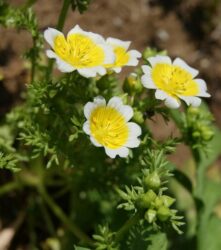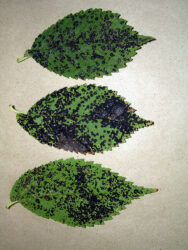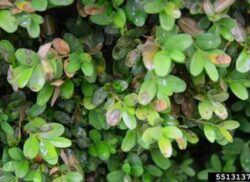In this article, we will discuss how once you have obtained or reared your plants how to keep them as healthy as possible. I have talked about pests and diseases in the past, but in this article, we are going to talk about what you can do to minimize damage to your plants.

Pests and diseases are part of life for gardeners as they are important actors in the natural cycle of life of decay and death. The arrival of pests and diseases does not need to cause you to go into a panic as it is not a mistake that you have made or something you have missed out on. You do have the choice as you can come up with all guns blazing or you can be more methodical in your approach, in this way you anticipate and respond to the frets.
A more realistic approach is to make your plants tough by taking an effective approach, aiming for a tolerable, low level of incidence rather than total elimination of the problem. Chemical treatment should be used but only if everything you have tried has not worked.
MAKE YOUR PLANT STRONG
You can reduce the risk of your plants experiencing trouble from pests and diseases by supporting and strengthening the health of your plants. You will need to make the soil free-draining, adding organic material, cultivating the surface so that predators such as birds and beneficial insects can eat them. It is also a good idea to mulch around the growing plants to reduce the stress from droughts.
For edible plants, you will need to protect them by practising crop rotation to stop problems building in the soil. You will need to keep on top of the weeds that will not compete and handicap your plants by taking the nutrients from your plants and also be a source of harbouring pests and diseases.
To get the best from your plants you must avoid planting or sowing in cold conditions (so that the cold will weaken or kill the plants or prevent seeds from germinating), skimping on hardening off, transplanting incorrectly or not treating diseased plants soon enough
AVOIDING PESTS
If you neglect plant or overprotect them can lead to weak growth that will succumb easier to troubles than sturdy plants that are protected by taking sensible precautions.
The first precaution you can take is to use tolerant or disease-resistant seeds. This is especially important seeds that rot quickly in well-prepared soil or seeds that disperse through other plants that camouflage their presence.
You can interplant adjacent rows with other plants to deter pests. For example, a row of carrots between two rows of onions will deter the carrot root fly or that under sowing members of the brassica family with clover can deter the cabbage root fly.
You can also interplant susceptible vegetables with Gaillardias and Limnanthes to attract insect predators.

For any plant, you buy or are given, look for pests and diseases, as they are a common source of transmission. Another source of transmission is overwintered plants, which can shelter and feed a whole array of pests. Get to know your enemy. So that you can install barriers, traps and deterrents like slug traps and fences for flies, placed at the right place at the right time. The final thing you must do is check the plant regularly, which you should act immediately once a fret is observed.
USE SIMPLE SOLUTIONS
The majority of insects and invaders in the garden are harmless, some are beneficial. Whilst a minority are genuine pests. Froghoppers or Cuckoo spit is little more than a cosmetic nuisance, whilst others only target specific plants or are seldom met.
Very often the simplest treatment is often the best. For example, Brassica seedling will not be attacked by flea beetles if they are sown early and watered in dry weather. You can check manually and catch slug, snails or caterpillars and dispatch them, quickly and effectively by dropping them in a jar of saline solution. If you see leaf miners in your leaves, you can squash the larvae at the end of the leaf tunnel to dispose of them instantly.
FRIEND OR FOE
Do not practice if it moves, shoot it policy as this discriminates indeterminately, killing beneficial insects as well as those that you do not want. Most of the pests you find in the garden are part of a food change and will themselves be consumed by birds, carnivorous or parasitic insects and their larvae. To be able to deal with pests, you need to get to know your enemy and who is your friend.
If it moves slowly or not at all they tend to be plant-eaters, whilst the quick, moving, agile ones are the predators. For example, the fast-moving centipede will kill and often consume the slow-moving plant-eating millipede.

Make these natural predators welcome in your garden by creating a favourable habitat. Beetles and newts that feed on pests at the soil level, can be sheltered by having stones, plants so that they can hide and by using mulches.
Attract ladybirds, lacewings and hoverflies, who consume aphids, by growing suitable flowers such as Asters, Chrysanthemums, marigolds and sedums. To help these offer an insect box or hotel in winter that can house these over the cold winter months.
Use water to attract frogs, toads and newts, so that slugs and snails can be dealt with. You can also buy various predators’ online that you can use in greenhouses but not very effective outside, where they are likely to escape. Know your friends and foes.
AVOID DISEASES
Plant diseases are often damaging in nature because they tend to be invisible to the eye and often arrive without warning. The problem is that most are fungal in nature, although bacterial and viral infections also exist. The biggest drawback is that once the disease appears on plants, it may be beyond saving. Many pathogens, especially fungicides no longer work because of overuse. The result is that the pathogens can remain inclusively in the soil or in the plant tissues, waiting to infect a new plant.

Since diseases are spread easily, there is a good case to destroy a diseased plant before the infection can spread. Prevention is easier than treating any specific disease. You need to practice good cultivations to encourage strong, vigorous growth is essential. You need to practice good hygiene to avoid spread, avoid overcrowding, water to reduce drought stress, avoid under or overfeeding, and make sure it is free-draining.
It is also best to remove dead plants and decaying leaves and not propagate any diseased plants. To reduce the impact of diseases on your plants is to use tolerant varieties. You will also need to inspect plants for diseases where you will either get rid of stems, leaves or the whole plant immediately.
TREATING DISEASES
One of the wisest action is to remove and destroy any diseases plants. It is best for the others to survive at the expense of one plant.
Fungicides will rarely save an ailing plant but they are often better at stopping the diseases from spreading or appearing in the first place. The results will be unpredictable depending on so many factors and it is better to take cultural precautions than rely on anything that comes from a sprayer or bottle.
Many fungal diseases are specific and only affect certain plants. For example, getting the pH level right will stop clubroot, a disease of brassicas in its track. If you cover a peach or nectarine tree in winter with a waterproof covering, it will stop peach leaf curl in its track. If you control pests this will often stop sooty moulds from forming on plants. Other conditions are more common and will affect a whole range of plants, especially if the weather conditions favour them and/or a host plant is nearby.
Please note that symptoms can be common in more than one disease, and so you must be certain of what disease you have before you attempt to treat it. Very often disease is caused by nutrient deficiency or prolonged wet conditions.
Diseases that can affect plants will be dealt with in another article.
CONCLUSIONS
In this article, we have discussed how to keep your plants healthy, especially from pests and diseases. You can deal with pests by making your plant as strong as possible and by encouraging natural predators and by use sacrificial and interplanting to avoid your plant from being attacked by pests.
Diseases are often more difficult to treat and often an affected plant will need to be disposed of. With fungal infections, it is better to spray to avoid spreading the infection and to keep the disease localised. You do not always have to rely on the use of fungicides and pesticides to keep the pests and diseases in check.
If you have any questions or comments that you wish to make on keeping your plants healthy and how to reduce the impact of pests and disease, please do so in the comment box below.
